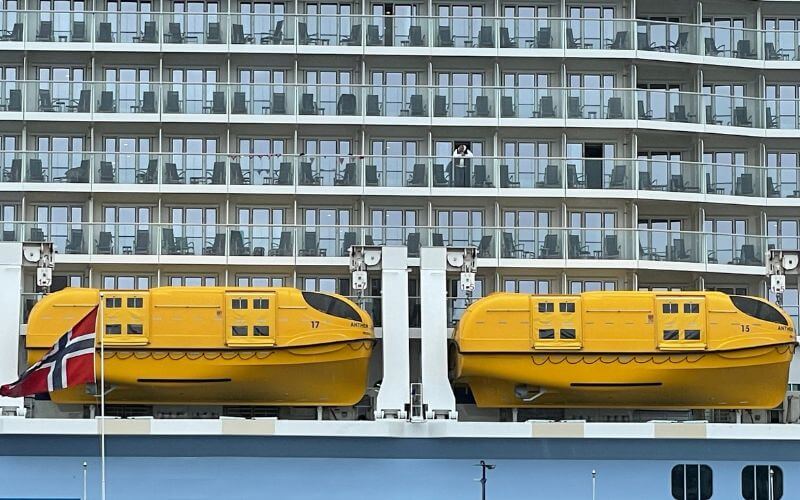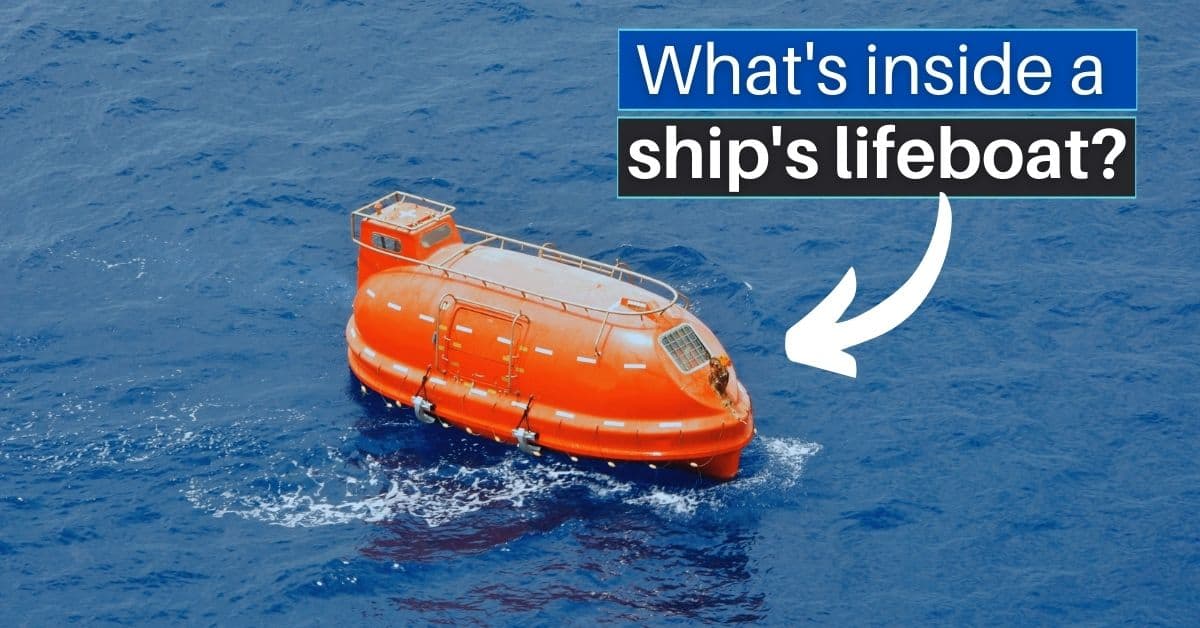Table Of Content

According to lifeboat manufacturer Fassmer, enclosed lifeboats have no windows besides those in the steering area, while lifeboat tenders have windows for viewing the surroundings from the seats. Modern lifeboats carry an Emergency Position-Indicating Radio Beacon (EPIRB) and either a radar reflector or Search and Rescue Transponder (SART). During this mandatory safety drill, you will be shown to your assigned lifeboat station, often called a muster station. All cruise ship passengers must participate in a lifeboat drill before the cruise sets sail. Lifeboats aren’t just used in emergencies, they sometimes double up as tender boats to take passengers to shore from the cruise ship when in port. This might not seem like enough for a cruise ship that can hold over 6000 passengers and crew.
Are There Enough Lifeboats On A Cruise Ship?
Lifeboats are typically stored on both sides of the ship, and each passenger is assigned to a specific one. This rule was implemented in response to the Titanic disaster, which tragically did not have sufficient lifeboat capacity for everyone. Another practical concern, often more prevalent than the need for a restroom, is seasickness. It’s important to note that these capacities are determined based on rigorous safety standards and regulations. Anyone whose every been on a cruise (or seen one) will immediately notice the rbight, colored lifeboats on the sides. The only means of relieving yourself is out the door or in a bucket or bag.
Challenges and Potential Solutions Regarding Lifeboat Requirements
Another bit of good news is that there are more life rafts located on a ship than is necessary. The International Convention for the Safety of Life at Sea, or SOLAS, states life rafts should be on both sides of a cruise ship. They should be able to sufficiently hold the entire ship’s capacity minus the expected lifeboat capacity for that location. If you are anywhere concerned, you can take comfort from the fact that of the hundred cruise ships sailing oceans and rivers every day, lifeboats are very rarely required.
Titanic 2: Everything You Need to Know - Cruise Critic
Titanic 2: Everything You Need to Know.
Posted: Thu, 14 Mar 2024 07:00:00 GMT [source]
How Many Lifeboats Are Required On A Cruise Ship
All seating on the lifeboat must support a person weighing a minimum of 220 pounds. In addition, the lifeboats and the wires that move them up and down must be strong enough to allow the lifeboat to be lowered at full capacity. Lifeboats are located outside on both sides of the cruise ship, typically stored on or just above one of the middle decks with an outdoor promenade so passengers can easily board them. This spot is ideal because it's a central location for both the upper- and lower-deck cabins, as well as many public indoor and outdoor venues and amenities. The interior of a lifeboat includes rows of seating, which may or may not have a seatback. A steering area with windows and a hatch is located toward the top of the vessel.
Lifeboat Drills and Training: Preparing for the Unexpected

Cruise ship operators must stay abreast of these changes and ensure that their vessels are in compliance with the latest requirements. These questions led me to dive deep into the world of cruise ship lifeboats, and in this article, I’ll share with you everything I’ve learned. No one was evacuated by lifeboat, but this led to yet more safety improvements on cruise ships.
Lifeboats on Cruise Ships: Safety, Capacity, and Amenities
These can be manually deployed, but they are also capable of automatic deployment, both operations can take place even when heavily listing - another requirements in SOLAS. This includes the off chance that some lifeboats may not be deployable due to the boat listing too far to one side or for any other unforeseeable circumstances. This drill is required by international law established by the International Maritime Organization (IMO), a branch of the United Nations.
The Liferaft can never be opened or tampered with by the crew or any personnel for the Cruise Line. On-site inspections certify all mandatory equipment on the Boats and ensure that all the required contents are there. To keep their knowledge of lifeboat operations up to date, members of the cruise crew participate in frequent training as well as weekly and monthly lifeboat inspections. Recovering a lifeboat back onto the ship after a drill or emergency is equally important and requires precision. The recovery process is usually initiated by positioning the ship to create a lee – a calm area on the downwind side of the ship, to protect the lifeboat from wind and waves. Remember, a properly maintained lifeboat could be the difference between life and death for passengers and crew members alike.
Ideally, a cruise ship needs a higher lifeboat capacity than the total number of passengers and crew on the ship. While no one hopes to ever rely on lifeboat rations, it’s reassuring to know cruise ship lifeboats are stocked with essentials to aid survival for multiple days if needed. According to maritime safety requirements, each lifeboat must carry fresh water and 7 days of food rations for the maximum number of people on board. The number, size, and capacity of lifeboats are determined by international maritime regulations and the ship’s dimensions and layout. It is important for passengers to pay close attention during lifeboat drills and familiarize themselves with the location of their assigned lifeboat station. Following instructions from crew members is crucial to ensure a swift and organized evacuation in case of an emergency.
Liferafts
A muster drill is a mandatory safety exercise with the objective to familiarize all guests and crew with the location (muster station) where they are to assemble in the unlikely event of an emergency. Many people worry that cruise ships don’t have enough lifeboats if an emergency evacuation is needed. New megaships have adopted the use of larger lifeboats that can accommodate 370 people, which means that fewer lifeboats are needed in order to meet the required capacity. However, these days a cruise ship’s lifeboats can be multipurpose — used to ferry passengers to the port as necessary.
If you are thinking of going on a cruise, one of your safety concerns might be what happens in the event of an emergency and whether there are enough lifeboats for all passengers to disembark safely. While regulations don’t require enough emergency boats for 100% of people on board, crews are extensively trained on emergency evacuations. Passengers should never try to board lifeboats on their own except by direct orders from the captain and crew during an evacuation. Lifeboats require proper preparation and procedures for safe loading and lowering. Attempting to take matters into your own hands can make the situation more dangerous for everyone. But when Titanic hit the iceberg and call went out to abandon ship, there was only enough space in the boats for around half of the passengers.
The remaining 25% of passengers that can't be accommodated in the traditional lifeboats can use cruise ship inflatable life rafts. These are generally designated for crew members, while guests will board the lifeboats first — though rafts can also be used for guests if necessary. The maximum capacity of a cruise ship lifeboat is 150 people, according to the International Maritime Organization's International Life-Saving Appliance Code. While the lack of bathrooms is not ideal, including fully plumbed heads and holding tanks on lifeboats would reduce maximum passenger capacity.
These rafts serve as an essential supplement to the regular lifeboats, providing additional evacuation capacity in emergency situations. A lifeboat or liferaft is a small, rigid or inflatable boat carried for emergency evacuation in the event of a disaster aboard a ship. Recreational sailors usually carry inflatable liferafts, though a few prefer small proactive lifeboats that are harder to sink and can be sailed to safety. It is important to remember that while lifeboats are a vital component of maritime safety, cruise ship operators implement comprehensive safety protocols to prevent emergencies from occurring. However, in the unlikely event of an emergency, lifeboats are ready to play their crucial role in ensuring the safety and survival of all onboard. The passenger capacity of a cruise ship is one of the key factors in determining the number of lifeboats required.
4,200 passengers and crew had to evacuate in the dark, and 32 people died. Lifeboats are built out of non-combustible materials to ensure that they are flame-retardant. They are built to be completely stable even when filled to capacity, and they are able to be deployed while the ship is moving at a maximum speed of 5 knots.
All cruise ships must have enough lifeboat capacity for at least 75% of the maximum capacity for total people on board, including crew and passengers. There will be enough lifeboats for 75% of the mega cruise ships’ maximum capacity for crew and passengers. To sail legally, cruise ships must meet specific safety requirements for lifeboats mandated by international maritime regulations.
These regulations make sure that all ships have the necessary safety equipment onboard, and regular safety checks and crew training take place. LIfeboat technology and requirements are just one component of what makes cruising among the safest ways to vacation. Remember though that the first line of defense from fire, navigational hazards, and weather is the hard working crew - safety truly is their top priority. Keep this in mind next time you think your stateroom attendant is just a housekeeper - she may also be responsible for firefighting or other essential tasks. The regulations require that each side of the Ship have enough accommodations for 37.5 % of the total number of persons on board.
Cruise ship crew members are trained to maintain lifeboat engines and test them regularly. The engines need to be ready to start instantly and operate reliably in an emergency to deliver passengers to safety. Typically, lifeboats are located on upper decks near lifevest stations and embarkation areas. As per the maritime safety regulations, for the remaining 25 percent, there will be enough life rafts.

No comments:
Post a Comment